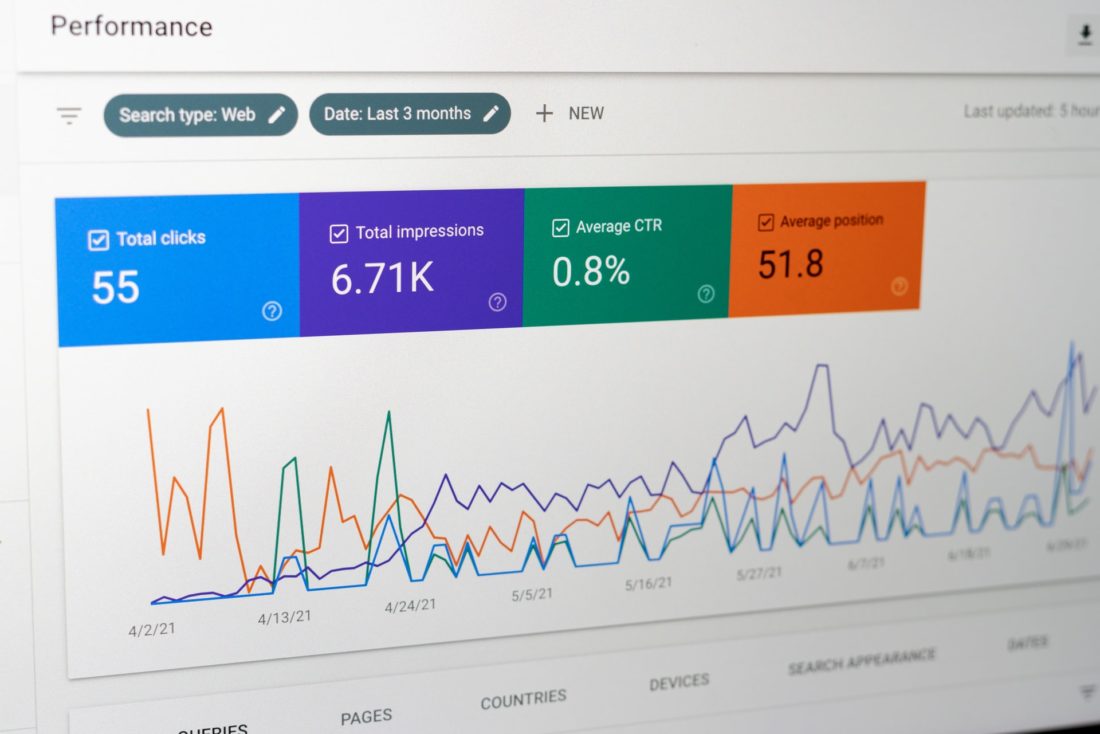The next generation of Google Analytics will have a significant impact on your marketing metrics. Google Analytics 4 is the latest Google analytics software. In some ways it’s better than the previous version; in others, not so much. But going forward, it will be the only option for both web and app analytics.
In July 2023, Google’s Universal Analytics (what 90 to 95% of companies use for their web analytics) will be turned off and your Universal Analytics account won’t collect data anymore. So taking small actions now will allow marketing teams time to ease into Google Analytics 4, making the move as smooth as possible.
Wait. There’s a Google Analytics 4?
In 2020, Google Analytics 4 was introduced in beta form called App + Web so it’s not entirely new. Google solicited feedback from marketers and, as a result, refined the AI-powered software to be more privacy-focused, multi-platformed and ad-optimized.
According to Google, this update gives web property owners a customer-centric measurement as opposed to one fragmented by device or by platform. Integrating it with your Google Ads account will enable you to view your customers across their entire lifecycle, from acquisition to conversion and retention.
Here are some benefits of Google Analytics 4 (per Google):
- Uses AI to automatically surface helpful insights from customers, like understanding your customers across devices and platforms.
- Alerts you to significant trends in your data, like products seeing rising demand.
- Helps you anticipate future actions your customers may take.
- Measures app and web interactions together, like YouTube views, Google ads, and organic channels.
- Uses multiple identity spaces, including marketer-provided User IDs and unique Google signals from users opted into ads personalization.
- Simplifies and re-organizes reporting to provide insight into the part of the customer journey you’re interested in.
- Manages how you collect, retain and use your Analytics data.
- Allows more granular controls for ads personalization for data optimization.
- Adapts to a future with or without cookies or identifiers.
Getting Started
Not surprisingly, Google is encouraging users to create a new Google Analytics 4 property alongside existing properties. This allows users to gather data now in order to understand GA 4 as well as automatically receive Google releases. That said, they can continue to keep both their UA and Google Analytics 4 accounts consecutively until Google sunsets UA on July 1, 2023.
Most Google Analytics experts are encouraging everyone to migrate to Google Analytics 4 as quickly as possible if you plan to stick with the Google Analytics platform. According to data research agency Trust Insights, you’ll want to do this ASAP due to the historical data contained in your existing GA account. This data does not transfer, however, and will remain in your old account.
Yearly reports and benchmark reporting will become additionally difficult without that data in one place. In other words, moving over sooner will make that process less painful in the end.
Unlike Universal Analytics, Google Analytics 4 is not a one-stop shop so there will be a learning curve. Here are the ways to think about how to measure different analytics going forward:
- Configuration is best done in Google Tag Manager.
- Analysis, aka business intelligence, is conducted in Google Analytics 4.
- Reporting, the part most people use Google Analytics for, is best done in Google Data Studio.
But how do you make the transition? Trust Insights suggests the following regarding customer migrations:
- Audit and inventory existing Google Analytics 3 settings and dashboard.
- Gauge employee comfort levels with Google Analytics 4.
- Review processes such as reporting.
- Audit other analytics platforms.
- Draw up a transition plan.
- Install a backup analytics solution.
- Follow your plan!
- Provide ongoing training and support.
Learning Curve
As with all of Google’s software, there are many different resources available for tutorials on any of these topics. This list can get you started:
- Skillshop: Free online self-paced courses to learn how to use Google Analytics and other Google Ads tools.
- Analytics demo account: A fully functional (real business data) Analytics account that any Google user can access.
- Google Marketing Platform Academy: Live streams and on-demand marketing videos presented by Google’s team of product experts.
- Analytics Help Center: Documents all aspects of using Analytics, including how to get started, best practices for analysis, and troubleshooting.
- Analytics YouTube Channel: Offers videos on a number of different account setup and data analysis topics.
Google reports that Google Analytics 4 customers are seeing success with marketing objectives like generating leads and driving sales. In addition, Google Analytics 4 is set to provide a more “complete cross-channel view of the customer lifecycle and put that information to use with predictive marketing features,” according to news hub Search Engine Land.
It’s undeniable that change is the only certainty. As with all “free” services, like Google Analytics, their updates require users to up skill their knowledge and thinking. This is no different. That said, there is time to get used to the updated Google Analytics.
Photo by Justin Morgan
